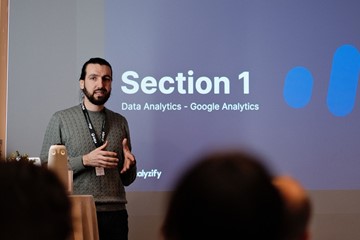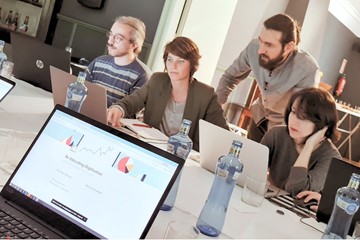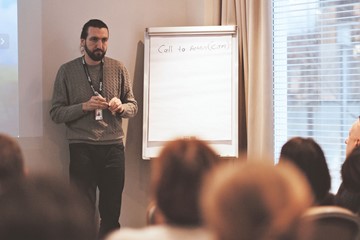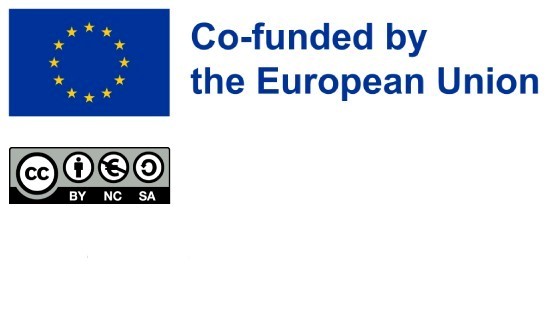1. Partnering for Cultural Digital Success
Introduction



Website and social media traffic can be explosive and bring so much more to companies or projects in terms of sponsorships, sales, and engagement. With a correct roadmap, each cultural industry website can be converted into a media machine with high, targeted traffic.
With this online marketing basics course, participants will be able to improve their marketing and communications by following good practices and paying attention to digital properties.
Our latest & most compharensive presentation is available to download here: Analytics and SEO presentation
A complete step-by-step guide will help you improve the reach of your digital content. Find the Roadmap on our Notion page:
ROADMAP
The full presentation is available online:
Personal branding & AI presentation
Introduction
This video emphasizes the importance of creating purposeful websites for cultural institutions like museums. It stresses that every website should have a clear "why" - a specific action they want users to take, such as booking tickets or making donations. The speaker critiques several museum websites, comparing them to well-designed commercial sites like Hubspot and Shopify, to illustrate effective practices in user experience and call-to-action placement.
The presentation advises cultural enterprises to structure their websites with clear goals, compelling headlines, informative subheadlines, and easily accessible call-to-action options. It highlights the need for concise, easily digestible content, given users' limited time and attention spans. The video concludes by encouraging website owners to view their sites from a first-time visitor's perspective, making adjustments to improve clarity and user experience, ultimately creating more effective online platforms that better engage their audiences.
This video delves into the concept of Conversion Rate Optimization (CRO) and its importance in designing effective websites for cultural institutions. It introduces the idea of macro and micro conversions, explaining how different actions on a website (such as ticket purchases, newsletter sign-ups, or PDF downloads) contribute to the overall user journey. The speaker emphasizes the importance of clear call-to-actions (CTAs) throughout the website and demonstrates how poorly designed CTAs can lead to user drop-off.
The presentation introduces the AIDA framework (Awareness, Interest, Desire, Action) and explains how it relates to the concept of a conversion funnel. The speaker highlights that while it's normal to lose potential customers at each stage of the funnel, the goal of CRO is to optimize each step to retain as many users as possible. The video concludes by stressing the importance of defining website goals, identifying micro-conversions, and clearly communicating these through effective CTAs before moving on to data tracking and analysis. It also emphasizes the need to test websites on mobile devices, as they often account for a significant portion of user traffic.
This video explores the importance of web analytics tools in optimizing websites for cultural institutions. The speaker uses a children's theatre website as an example to demonstrate how analytics can inform decision-making about content placement, design, and user experience. Key metrics discussed include time on page, bounce rate, conversion rate, and the ratio of new to returning visitors. The presentation emphasizes that these tools can provide valuable insights into which pages are most visited, how long users spend on each page, and which channels drive the most conversions.
While recommending Google Analytics as a free and comprehensive tool, the speaker stresses the importance of GDPR compliance when implementing tracking solutions. The video concludes by suggesting that analytics should be considered as a next step after establishing a well-structured website with quality content. The key takeaway is that while analytics are crucial for measuring digital impact, they should not take precedence over creating a solid foundation for the website itself.
This video focuses on Search Engine Optimization (SEO) and content marketing strategies for cultural institutions. The speaker emphasizes the importance of SEO in increasing organic traffic and visibility for cultural organizations, which often struggle to compete with media platforms in search results. The presentation covers key SEO elements such as page titles, content structure, image optimization, and URL structure. It also discusses the importance of creating diverse, high-quality content types including long-form blog posts, how-to guides, videos, podcasts, and interactive tools.
The video provides practical tips for keyword research and content idea generation, suggesting tools like Google's autocomplete feature and "People Also Asked" sections. The speaker emphasizes the need for original, well-formatted content that includes FAQs to address long-form search queries. The presentation concludes by encouraging cultural enterprises to utilize the provided SEO framework, which offers step-by-step guidance for improving online presence. The key takeaway is that while SEO requires effort, it can significantly boost a cultural institution's digital visibility and engagement with its audience.

Funded by the European Union. Views and opinions expressed are however those of the author(s) only and do not necessarily reflect those of the European Union or the European Education and Culture Executive Agency (EACEA). Neither the European Union nor EACEA can be held responsible for them.
License